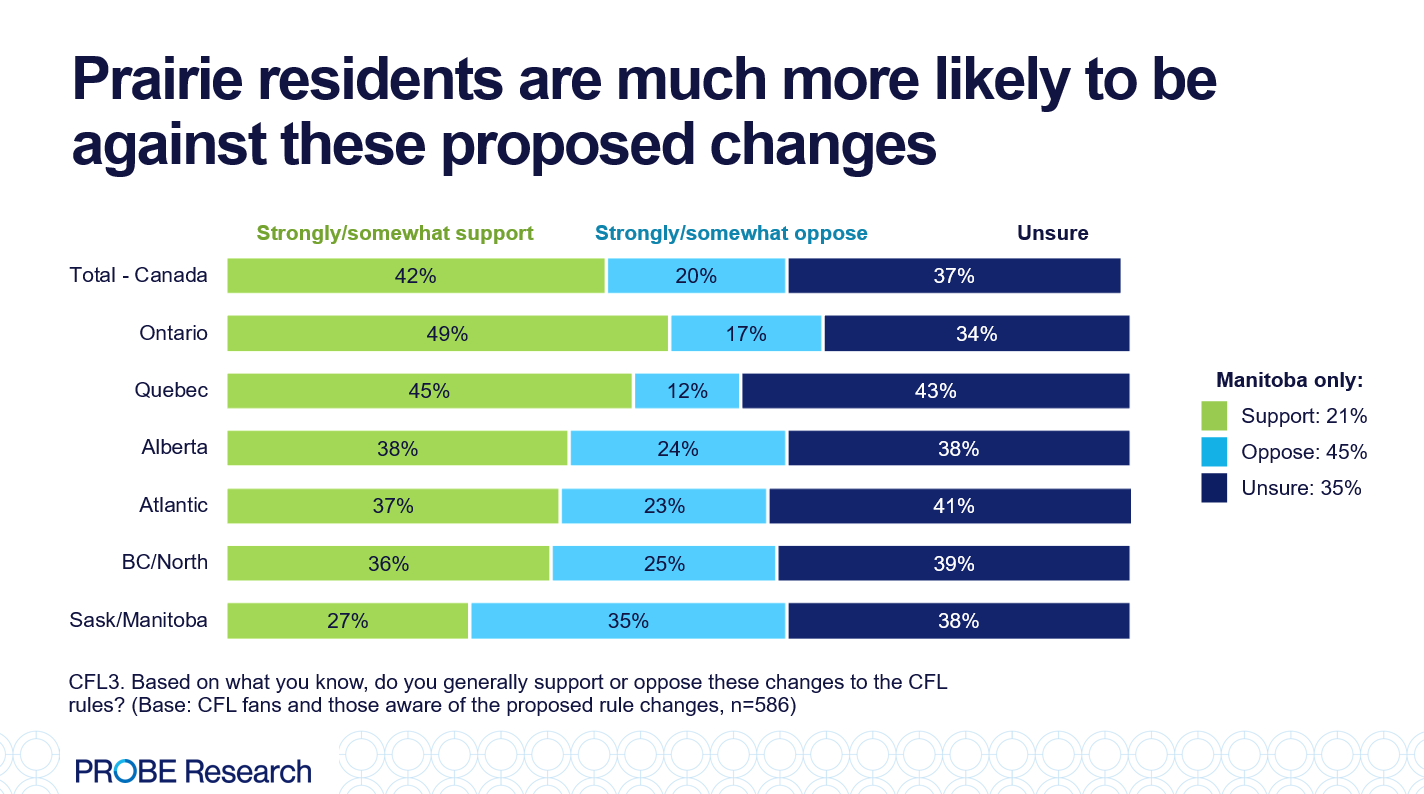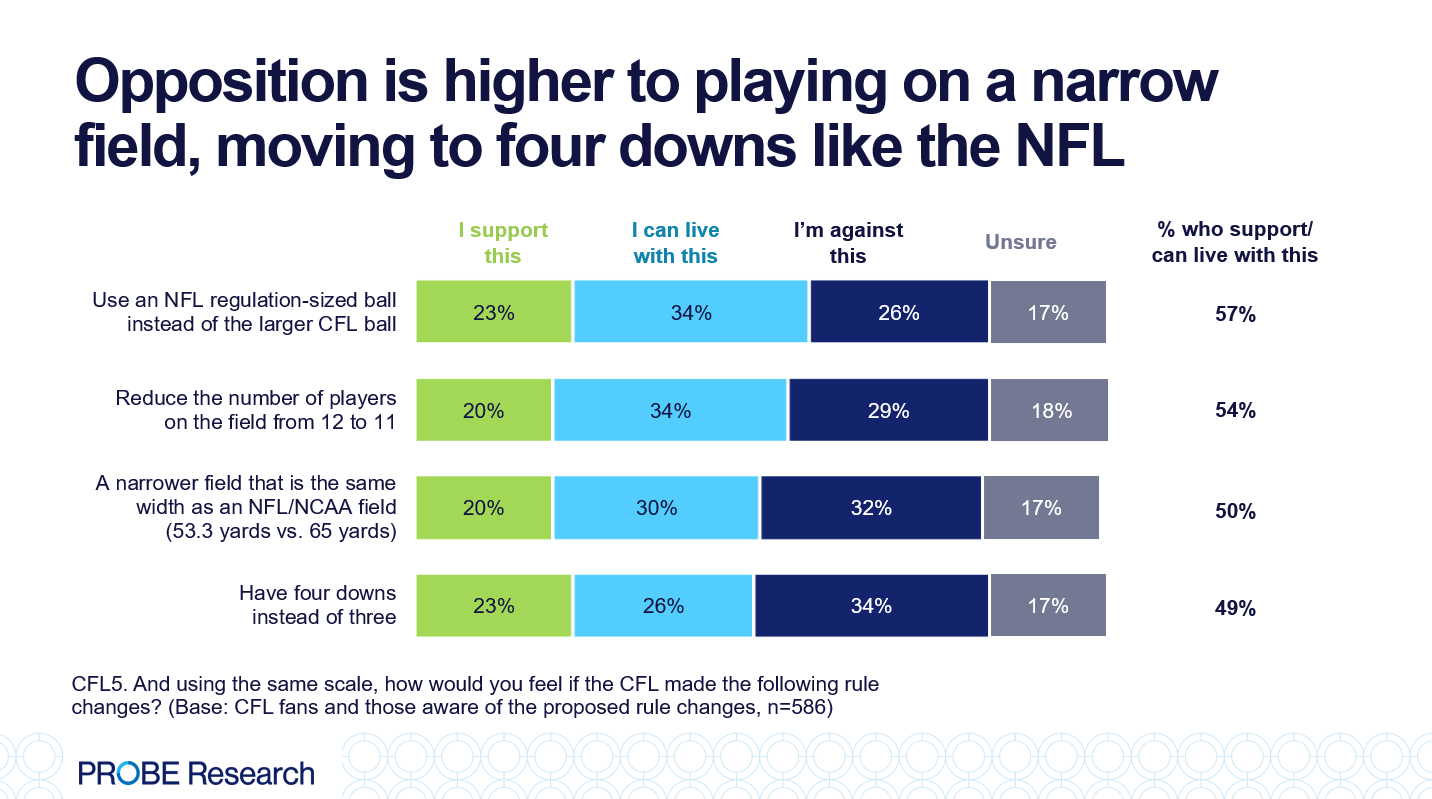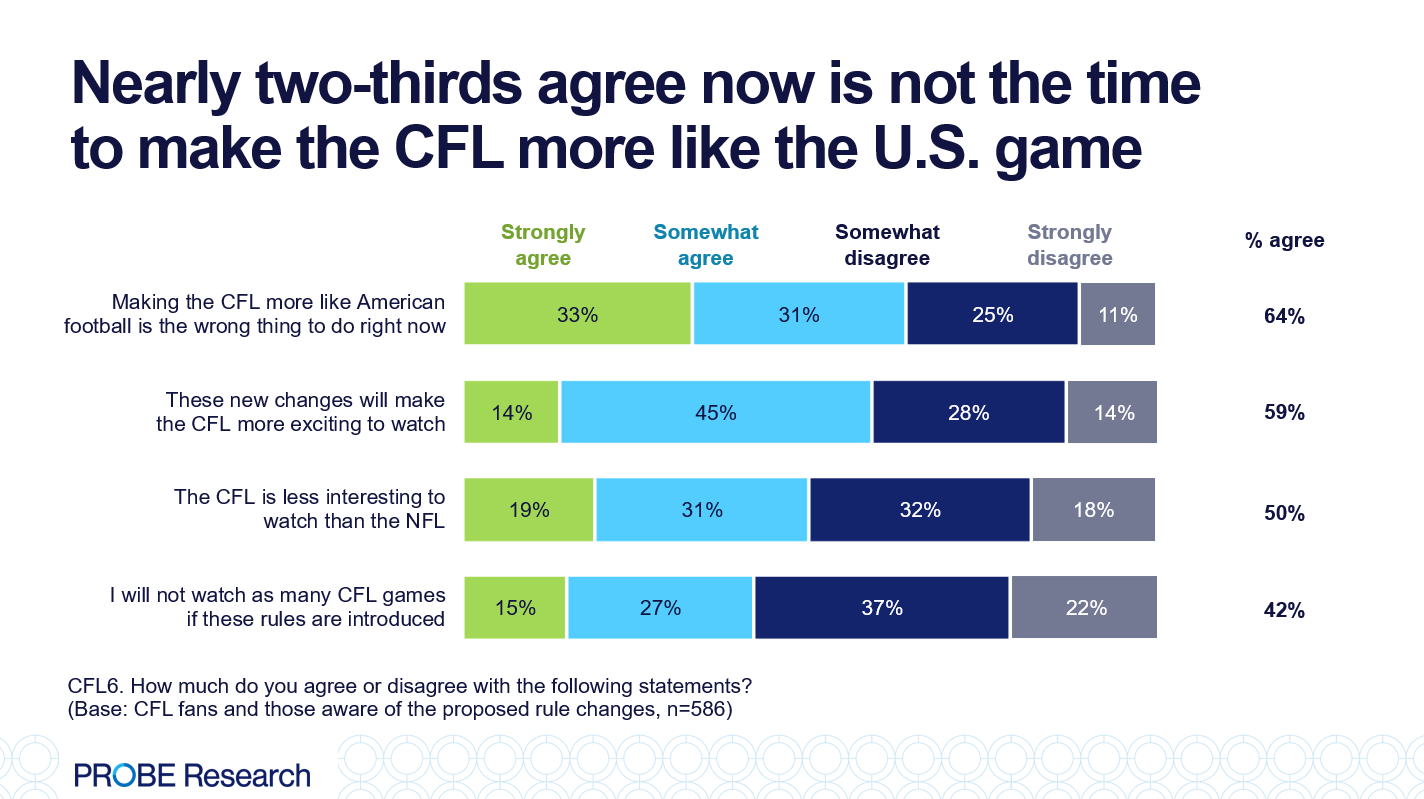The Canadian Football League (CFL) carries a set of uniquely Canadian sporting traditions, which are especially valued by the game’s loyal fans in the Prairies. But as the CFL seeks to grow its popularity in other parts of the country, it’s looking to evolve as an entertaining, exciting experience.
The CFL’s recent decision to tweak some of its rules for the 2026 and 2027 seasons – rules that differentiate the three-down Canadian game from the four-down American one – is an example of a classic marketing conundrum.
A new Probe Research survey finds that on the one hand, many of those who are somewhat interested in the CFL either support these changes or have no real issue with them. They are not likely to be bothered if the end zones are smaller, the uprights are moved from the goal line to the back of the end zone, or a missed field goal doesn’t result in a single point.
Members of the league’s most passionate fanbases in Saskatchewan and Manitoba – the ones who show up each week, selling out their respective stadiums and following their teams through thick and thin – are relatively OK with practical changes that could improve play (such as having an automatic play clock or adjusting where the goal posts are).

However, these fans are much more likely to oppose current (and possible) rule changes that could be seen as fundamentally altering what makes the CFL uniquely Canadian, including a 55-yard centre line, a narrower field, a smaller ball and, of course, four downs instead of three.
The CFL is walking a tightrope between tradition and innovation with these new rules. Any changes to the game must keep its existing and most loyal fans onside while also drawing in new audiences and making it more accessible.
Other highlights from this survey include:
Three in 10 Canadians are aware of the proposed changes to the CFL’s rules, with only about four in 10 identifying themselves as fans of the league to some degree.
Fans of three-down football are more likely to support (42%) than oppose (20%) these innovations, although a significant share of CFL fans have no opinion about them. However, those living in Saskatchewan and Manitoba are more likely than those in other parts of the country – especially Ontario and Quebec – to oppose these modified rules.
Fans are most likely to accept having an automatic 35-second play clock after each play, as well as eliminating the rouge (a single point) awarded when a team misses a field goal or punts the ball through the end zone. About one-half are either supportive of – or OK with – other announced tweaks to the game, including shortening the end zones, moving the goal posts to the back line of the end zone and shortening the field from 110 yards to 100. Again, those in Manitoba and Saskatchewan are more likely than others to oppose shortening the end zones.
There is slightly less support among fans for making other changes to be more like the CFL’s U.S. counterpart. Only about one in five are in favour of narrowing the field, playing with 11 (instead of 12) players, using a slightly smaller ball or having four downs instead of three. Younger fans are most enthusiastic about these ideas, while older fans – as well as those on the Prairies – are more likely to oppose them.

Nearly two-thirds agree the Canadian game shouldn’t be changed now, at a time when there is more tension between Canada and the U.S. This is despite the fact that there is a reasonable level of support for making changes to the CFL so it more closely resembles the American versions of the sport.
One-half agree, however, that these changes will make the Canadian game more exciting to watch. However, a minority of CFL fans – including a higher share of fans who regularly attend and watch games – say they will be less likely to tune in and/or show up if their game is more like the American product.

Methodology
Probe Research conducted an online survey of 1,230 Canadians over the age of 18, as well as a supplemental survey of 448 Manitoba adults. The national survey of N=1,230 adults was conducted between October 6 and 12, 2025 using a national online sample provider (LEO). The survey of 448 Manitobans was conducted between October 6 and 14, 2025 using Probe Research’s proprietary online panel of Manitobans.
An online panel is a non-probabilistic sample of convenience, so no margin of error can be ascribed. For the purposes of comparison, a random sample of N=1,230 Canadians has a margin of error of ± 2.8 percentage points, 19 times out of 20, while a random sample of N=448 Manitobans has a margin of error of ± 4.6 percentage points
Probe applied minor statistical weighting to the sample based on age, gender and region so that the sample properly reflects Canada’s population, based on census data.
This survey was designed and paid for by Probe Research.
Disclosure Statement
Probe Research is a member of the Canadian Research Insights Council (CRIC) and confirms that this research fully complies with all CRIC Standards including the CRIC Public Opinion Research Standards and Disclosure Requirements. Learn more here.




